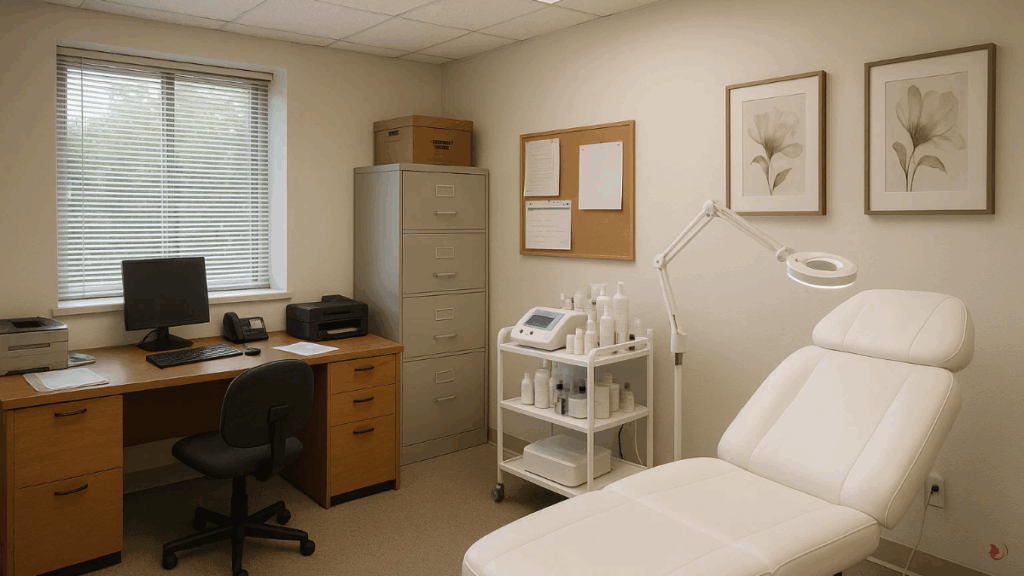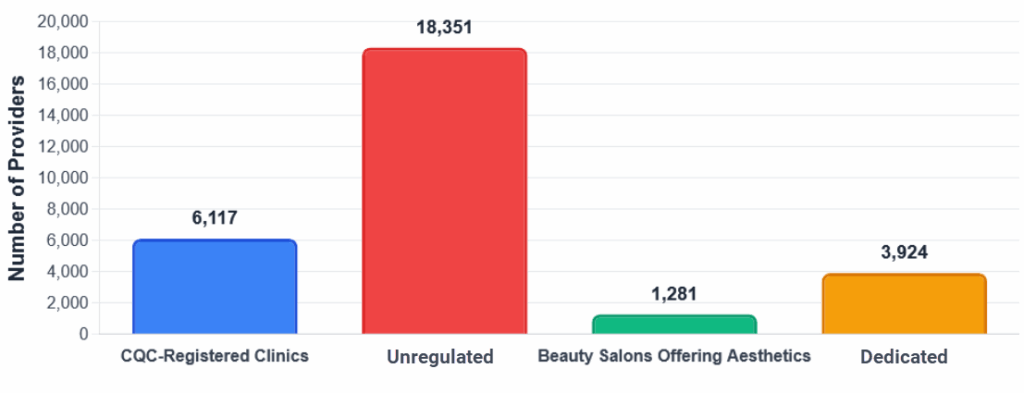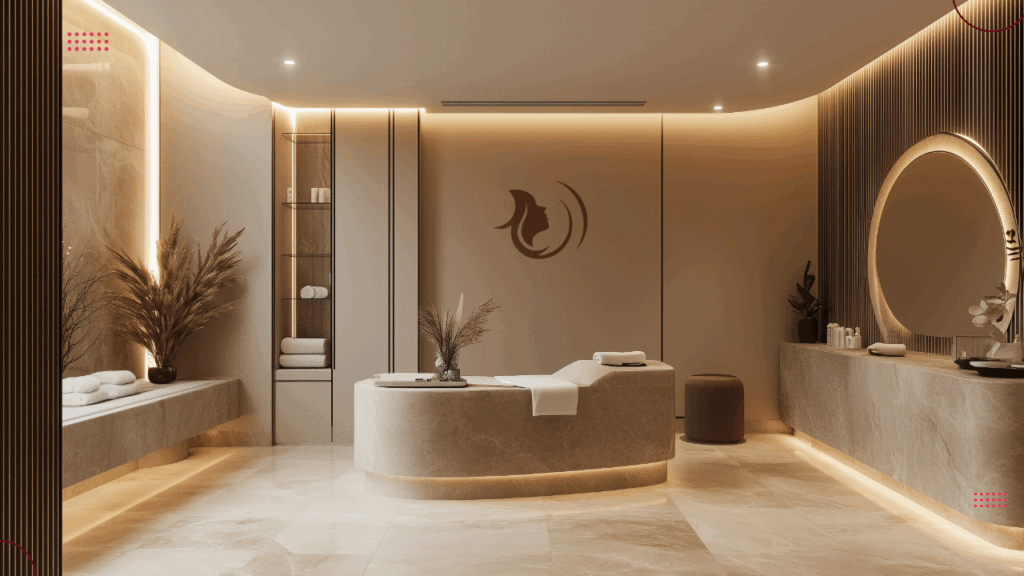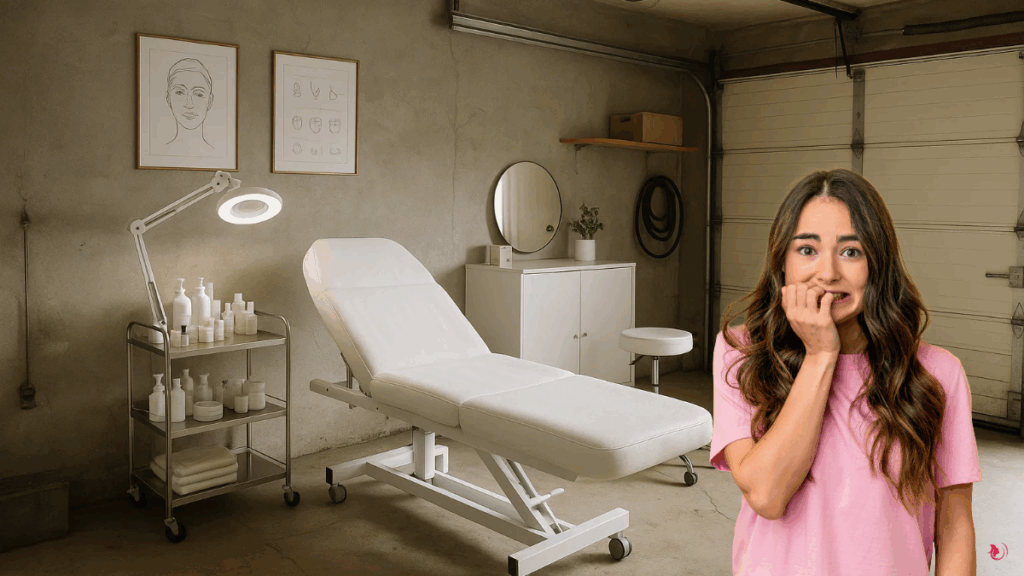Let’s be honest. Aesthetic tweakments have never been more popular. Whether it’s smoothing out fine lines with Botox, adding a little volume with dermal fillers, or going for that glow-up with skin boosters, non-surgical beauty treatments are fast becoming as routine as booking a manicure. But while it may feel like the high street is overflowing with options, it turns out the UK aesthetic scene is a lot more complicated than it looks on Instagram.
How Big Is the Industry Now?
According to the British College of Aesthetic Medicine (BCAM), over 6,000 clinics in the UK are registered with the Care Quality Commission (CQC) to offer aesthetic treatments. That means they’re held to medical standards and are regulated, a good sign if you’re thinking of booking in. But here’s where it gets murky: that number only scratches the surface.
A recent study by University College London found more than 1,200 independent clinics offering injectables like Botox and fillers. Many of those are operating outside hospitals or official medical settings. And according to insurance data, there could be nearly 8,000 licensed aesthetics professionals in the country. But what’s more surprising (and frankly a bit worrying) is the estimate that for every regulated provider, there could be three who are completely unregulated.

Yes, you read that right.
That could mean around 18,000 aesthetics providers in the UK are operating without proper oversight — which definitely raises red flags around safety, qualifications, and accountability.
The Blurry Line Between Beauty and Medicine
If you’ve ever had a facialist suggest lip filler or seen injectable deals offered at your local salon, you’re not alone. A good portion of the UK’s 10,000+ beauty salons now offer aesthetic services. In fact, around 12% of injectable practitioners are aestheticians or therapists, often without medical training.

While some are excellent and highly skilled, there’s no standard rulebook. That makes it even more important for us as consumers to do our homework before we let anyone near our face with a needle.
So, What’s the Takeaway for You and Me?
Today, it’s estimated that between 24,000 and 25,000 clinics, salons and practitioners are offering non-surgical aesthetic treatments in the UK. That’s a massive industry. It is worth £2.3 billion in 2023 and expected to soar past £6 billion by 2030. Based on current population estimates the non-surgical aesthetics sector shows significant saturation. For every 100,000 people in the UK, there are approximately 36 clinics, rising to over 70 clinics per 100,000 women.
Among adults, the density stands at around 45 clinics per 100,000. On average, each clinic serves about 2,782 individuals, or roughly 2,206 adults. For women specifically, that figure drops to just 1,412 per clinic. These numbers highlight the growing demand, increasing supply, and the normalisation of aesthetic services within the UK population.
But here’s the catch: about 70% of these providers operate without formal regulation. That means a lot of people are having “medical” treatments in settings that aren’t necessarily held to medical standards.
And while some industry groups like Save Face and BCAM are pushing hard for better regulation and safer practices, progress has been slow. A recent dispute even questioned what qualifies someone as a “medical professional.” If the experts can’t agree, what hope do we have as consumers?
What You Can Do Right Now

Look for a reputable aesthetic clinic. If you’re thinking of booking a tweakment, ask questions. Look for professional registrations, check your practitioner’s qualifications, and don’t be shy about asking what products they’re using. Treat your face like the luxury it is. and avoid cutting corners for a bargain.
The aesthetic world is exciting and ever-evolving, but it’s also a space where informed choices matter more than ever. Let’s stay curious, cautious, and always a little glamorous.


